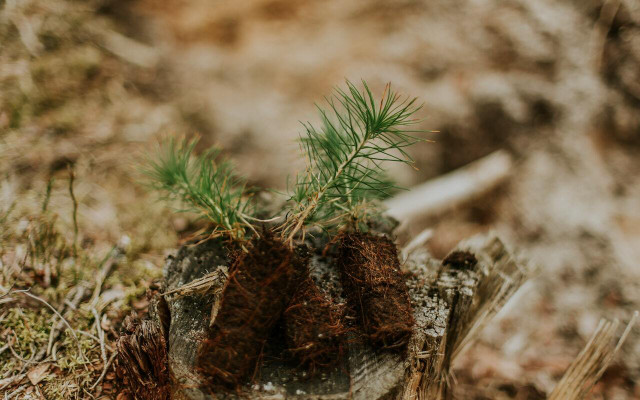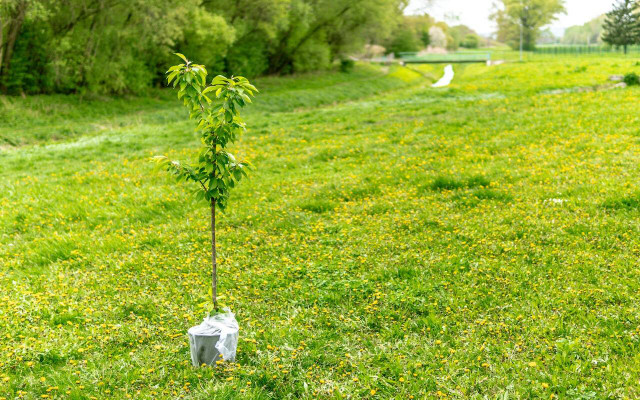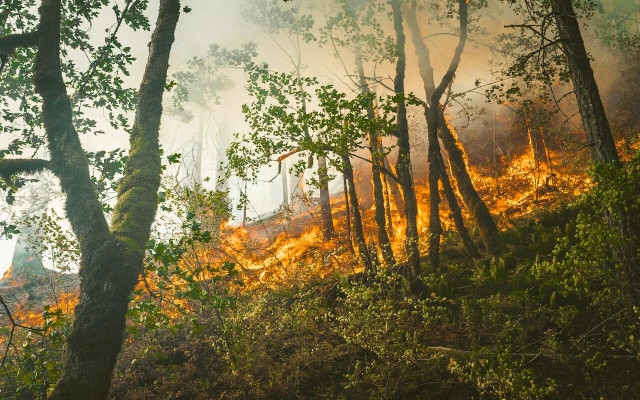Reforestation efforts are underway to help fight climate change across the globe. Learn why reforestation is important and how you can get involved.
Forests are one of the world’s most important ecosystems — life on earth cannot be sustained without them. Nearly one-third of the planet is covered in forests; however, humans cut down approximately 15 billion trees each year. This pattern is completely unsustainable without active reforestation efforts.
Reforestation is the process of replanting trees in areas that have been affected by natural disasters like wildfire, drought, infestations, and commercial deforestation. It is commonly advertised as a nature-based solution to help fight climate change, but there’s more to it than that. Let’s take a deeper dive into the role reforestation plays in saving the planet.
Types of Reforestation



(Foto: CC0 Public Domain / Unsplash / michal dziekonski )
Reforestation efforts are underway worldwide. They fall into one of two categories:
- Urban reforestation: planting trees in urban areas. It focuses on increasing shaded areas, improving air quality, transforming urban landscapes and protecting from heat. Urban planners may look to add more green spaces and plant trees in cities.
- Rural reforestation: large-scale operations to restore deforested areas. The focus here leans more towards preserving native species, protecting against erosion and increasing soil fertility. This is the type of reforestation being used to save the rainforest.
Another recent trend is afforestation, where trees are planted in areas without existing tree cover. There are mixed feelings about this methodology; forests comprise much more than just trees, and afforestation uses valuable land that may be better suited for other uses.
Benefits of Reforestation



(Foto: CC0 Public Domain / Unsplash / Daiga Ellaby )
Forest conservation to save our existing forests is the best way forward. However, reforestation has a host of benefits when properly managed. They include:
- reduced air pollution through carbon sequestration
- improved health and quality of natural environments
- making land more hospitable for wildlife and increasing biodiversity
- improved water quality by redistributing the majority of the water absorbed
- preservation of old-growth forests and natural areas
- added job creation
That said, there are some drawbacks to reforestation as a climate change solution, such as:
- limited land that trees can be planted on
- in large monocultures, the trees can do more harm than good
- trees are often grown as a commercial undertaking with plans to harvest them in the future
- excess plastic waste is frequently used in the form of barriers to protect trees and nursery bags
- they absorb a finite amount of carbon
Is it a Sustainable Solution?



(Foto: CC0 Public Domain / Unsplash / George Bakos)
For reforestation to be sustainable, a lot of planning and research must go into the process. The following steps need to be followed for reforestation to benefit the environment:
- Site studies: The land needs to be analyzed based on the soil, climate, and type of plants and animals in that ecosystem.
- Species selection: Only native trees from local sources should be planted for good-quality forest germplasm.
- Planting method: The least invasive technique should be used for soil preparation. Tree height and coverage must be considered to avoid interference with one another. The trees must also be planted properly and deep enough in the soil.
- Protection plan: A plan should be put in place to specify how to protect the reforested area from pests, diseases, fires, logging, and other natural disasters. Without proper maintenance and supervision, the reforested area is susceptible to various threats.
According to the Global Forest Resources Assessment, more than 2 billion hectares of forests have management plans, most of which are in Europe. For the planet to benefit from reforestation efforts, management plans must be in place for more forests worldwide. This is particularly true in South America, where only 17% have plans.
Greenhouse gases are a significant contributor to the climate crisis, and forests play a crucial role in combating climate change. On its own, tropical tree cover may be able to provide nearly 25% of climate mitigation needed over the next decade to meet the goals set out in the Paris Climate Agreement.
Reforestation Efforts in the United States



(Foto: CC0 Public Domain / Unsplash / Karsten Winegeart)
For reforestation to be a real tool for climate action, it must be implemented and properly managed on a global scale. The US has already planted 40 million and has committed to planting 1 billion trees by 2030 to combat climate change.
Many environmental organizations are planting trees in our own backyards through various reforestation projects, including One Tree Planted, Green Forests Work, Green Seattle Partnership, and the Nature Conservancy. Some of the specific government-supported efforts include:
- Central Appalachian Spruce Restoration Initiative: restoring historic red spruce-northern hardwood ecosystems to the higher elevation areas of Central Appalachia.
- America’s Longleaf Restoration Initiative: restoring longleaf pine trees across the southeastern states.
- Urban and Community Forestry Program: a government initiative to improve millions of acres of urban and community forest across the country.
If you’re looking for ways to be involved, do some research. Every state has some kind of reforestation effort underway, and organizers are always looking for people to donate their time or money to the cause.
Read more:
- Eco-Anxiety: What It Means to Fear for the Future of Our Planet
- 12 Best Picture Books About the Environment
- Eco-Friendly Toilet Paper Pros and Cons
Do you like this post?








